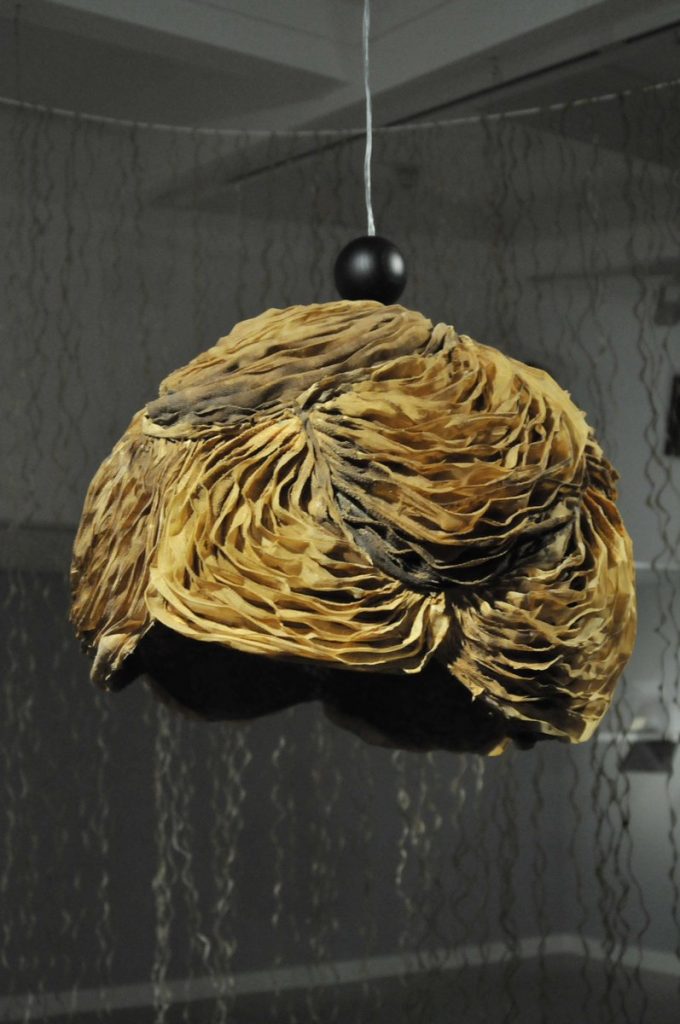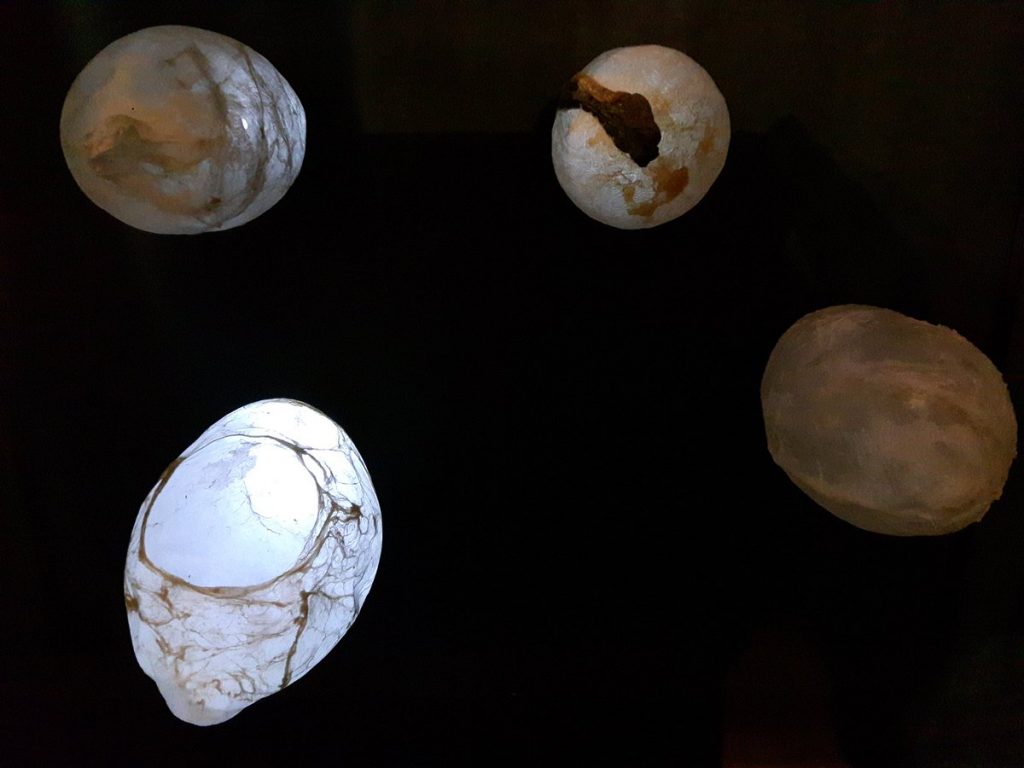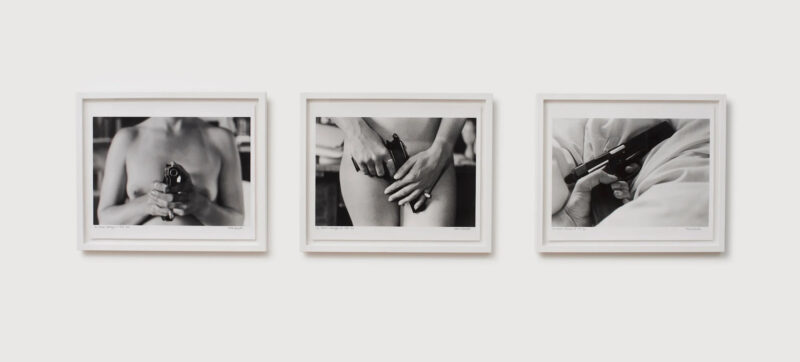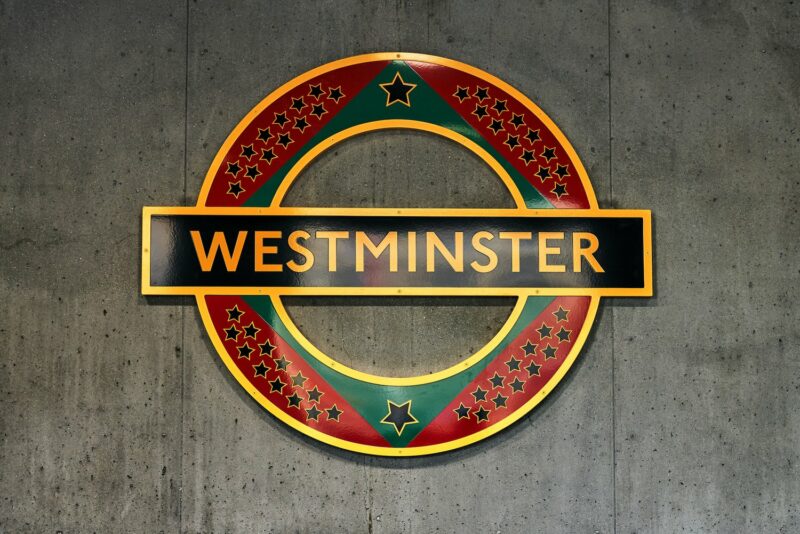Elpida Hadzi-Vasileva: ‘Rendition of Self’, 2016 – cow stomach, turned wood
If you want striking art interestingly set yet conveniently placed, I can currently recommend the Grant Museum of Zoology near Euston. In among its time capsule cabinets of the bizarre – a chimpanzee’s hand, flying squid and dinosaurs, a giant turtle shell, all sorts of skeletons – Elpida Hadzi-Vasileva‘s artworks are sufficiently at home that you need the map which pinpoints their location (‘Internal Beauty’, to 28 March). The Anglo-Macedonian artist’s materials reinforce the commonality: lights made from sheeps’ testicles, a ‘bible’ of caul fat (which encases pigs’ intestines), a cow’s stomach forming a self-portrait. Rather as Arte Povera triggered a re-evaluation of poor materials, she shows that internal organs which we tend to avoid have a potential for beauty as well as obvious utility. One stylish swipe of pigment turns out to be printed from a cow’s anus, taking process-based abstraction in a direction not seen since Morten Viskum painted with a severed dead man’s hand. Add less gruesome instances – such as a flower made from quails’ beaks, a formation of rabbit jaws and ‘Gill’s Slits’, which combines the wing-like skeletons of several skates – and you have an unusual show in an unusual location.
Elpida Hadzi-Vasileva: ‘Witness of Virility’, 2011 (detail) – lights in sheep’s testicles
Most days art Critic Paul Carey-Kent spends hours on the train, traveling between his home in Southampton and his day job in London. Could he, we asked, jot down whatever came into his head?









